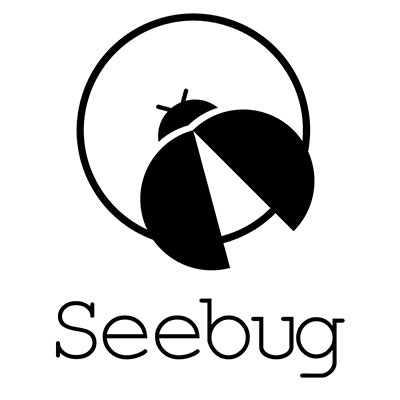# ICS Advisory (ICSA-18-333-02)
## Tridium Niagara Enterprise Security, Niagara AX, and Niagara 4
Original release date: January 10, 2019
[Print Document](javascript:window.print\(\);)
[Tweet](https://twitter.com/share?url=https%3A%2F%2Fus-
cert.cisa.gov%2Fics%2Fadvisories%2FICSA-18-333-02)
[Like Me](https://www.facebook.com/sharer.php?u=https%3A%2F%2Fus-
cert.cisa.gov%2Fics%2Fadvisories%2FICSA-18-333-02)
[Share](http://www.addthis.com/bookmark.php?url=https%3A%2F%2Fus-
cert.cisa.gov%2Fics%2Fadvisories%2FICSA-18-333-02)
### Legal Notice
All information products included in [https://us-cert.gov/ics](/ics) are
provided "as is" for informational purposes only. The Department of Homeland
Security (DHS) does not provide any warranties of any kind regarding any
information contained within. DHS does not endorse any commercial product or
service, referenced in this product or otherwise. Further dissemination of
this product is governed by the Traffic Light Protocol (TLP) marking in the
header. For more information about TLP, see [https://www.us-
cert.gov/tlp/](/tlp/).
* * *
## 1\. EXECUTIVE SUMMARY
* **CVSS v3 5.7**
* **ATTENTION** : Exploitable remotely/low skill level
* **Vendor** : Tridium
* **Equipment** : Niagara Enterprise Security, Niagara AX, and Niagara 4
* **Vulnerability** : Cross-site Scripting
## 2\. REPOSTED INFORMATION
This advisory was originally posted to the HSIN ICS-CERT library on November
29, 2018, and is being released to the NCCIC/ICS-CERT website.
## 3\. RISK EVALUATION
Successful exploitation of this vulnerability could allow an authenticated
user to inject client-side scripts into some web pages that could then be
viewed by other users.
## 4\. TECHNICAL DETAILS
### 4.1 AFFECTED PRODUCTS
The following Tridium products are affected:
* Niagara Enterprise Security 2.3u1, all versions prior to 2.3.118.6,
* Niagara AX 3.8u4, all versions prior to 3.8.401.1,
* Niagara 4.4u2, all versions prior to 4.4.93.40.2, and
* Niagara 4.6, all versions prior to 4.6.96.28.4
### 4.2 VULNERABILITY OVERVIEW
### 4.2.1 [IMPROPER NEUTRALIZATION OF INPUT DURING WEB PAGE GENERATION
('CROSS-SITE SCRIPTING')
CWE-79](https://cwe.mitre.org/data/definitions/79.html)
A cross-site scripting vulnerability has been identified that may allow a
remote attacker to inject code to some web pages affecting confidentiality.
[CVE-2018-18985](http://web.nvd.nist.gov/view/vuln/detail?vulnId=CVE-2018-18985)
has been assigned to this vulnerability. A CVSS v3 base score of 5.7 has been
calculated; the CVSS vector string is
([AV:N/AC:L/PR:L/UI:R/S:U/C:H/I:N/A:N](https://www.first.org/cvss/calculator/3.0#CVSS:3.0/AV:N/AC:L/PR:L/UI:R/S:U/C:H/I:N/A:N)).
### 4.3 BACKGROUND
* **CRITICAL INFRASTRUCTURE SECTORS** : Commercial Facilities, Critical Manufacturing, Government Facilities, and Information Technology
* **COUNTRIES/AREAS DEPLOYED** : Worldwide
* **COMPANY HEADQUARTERS LOCATION** : United States
### 4.4 RESEARCHER
Daniel Santos and Elisa Costante of SecurityMatters reported the vulnerability
to Tridium.
## 5\. MITIGATIONS
Tridium recommends that affected users upgrade to the latest versions of the
software (login required).
Niagara Enterprise security 2.3u1 Version 2.3.118.6:
<https://software.niagara-central.com/ord?portal:/download/6284>
Niagara AX 3.8u4 Version 3.8.401.1:
<https://software.niagara-central.com/ord?portal:/download/6276>
Niagara 4.4u2 Version 4.4.93.40.2:
<https://software.niagara-central.com/ord?portal:/download/6268>
Niagara 4.6 Version 4.6.96.28.4:
<https://software.niagara-central.com/ord?portal:/download/6281>
For more information please see Tridium's security bulletin SB 2018-Tridium-2
at:
<https://www.tridium.com/~/media/tridium/library/documents/collateral/technical%20bulletins/update%20your%20niagara%20software%20-%20fixes%20cross-
site%20scripting%20vulnerability_2018-11.ashx?la=en>
NCCIC and Tridium recommend users take defensive measures to minimize the risk
of exploitation of this vulnerability. Specifically, users should:
* Review and validate the list of users who are authorized and who can authenticate to Niagara.
* Allow only trained and trusted persons to have physical access to the system, including devices that have connection to the system though the Ethernet port.
* If remote connections to the network are required, consider using a VPN or other means to ensure secure remote connections into the network where the system is located.
NCCIC reminds organizations to perform proper impact analysis and risk
assessment prior to deploying defensive measures.
NCCIC also provides a section for [control systems security recommended
practices](/ics/content/recommended-practices) on the ICS-CERT web page.
Several recommended practices are available for reading and download,
including [Improving Industrial Control Systems Cybersecurity with Defense-in-
Depth Strategies](/sites/default/files/recommended_practices/NCCIC_ICS-
CERT_Defense_in_Depth_2016_S508C.pdf).
Additional mitigation guidance and recommended practices are publicly
available on the [ICS-CERT website](/ics/) in the Technical Information Paper,
[ICS-TIP-12-146-01B--Targeted Cyber Intrusion Detection and Mitigation
Strategies](/ics/tips/ICS-TIP-12-146-01B).
Organizations observing any suspected malicious activity should follow their
established internal procedures and report their findings to NCCIC for
tracking and correlation against other incidents.
No known public exploits specifically target this vulnerability.


暂无评论